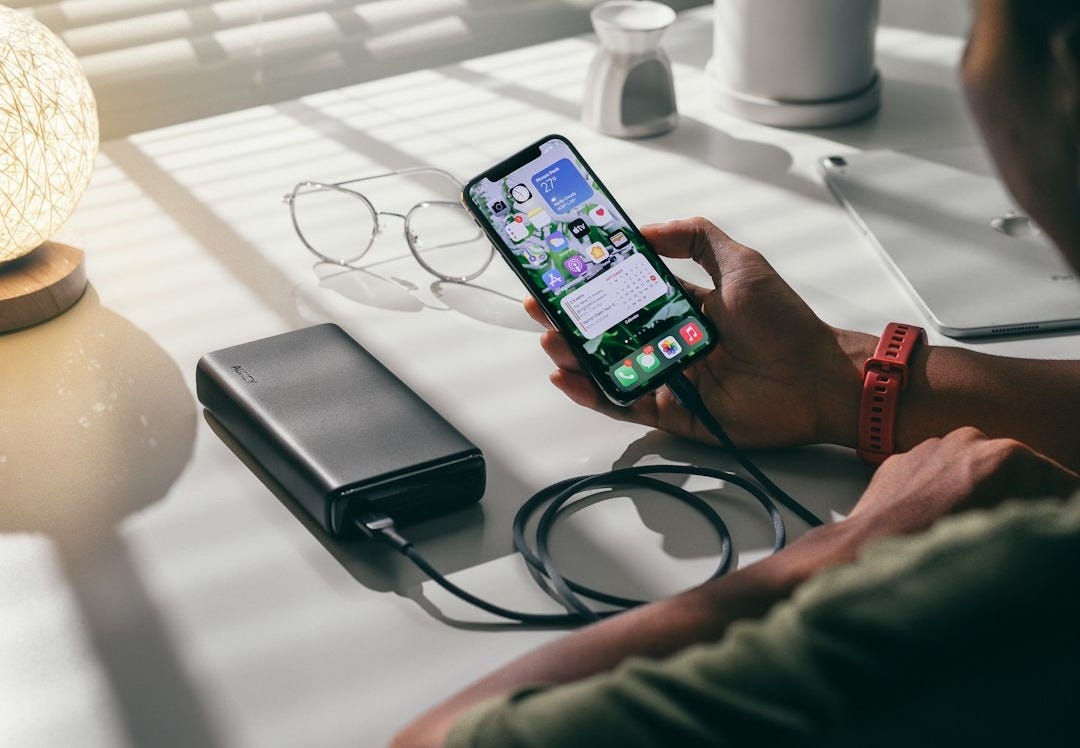Remote Work Backup Systems That’ll Save Your Butt One Day (Even If They Haven’t Yet)
Because working from anywhere only works if you're not one glitch away from a meltdown.
People love the idea of remote work: the laptop on a sunny terrace, cappuccino in hand, maybe a light breeze. And yes, sometimes it looks just like that. But if you're living this life full-time, you already know it doesn't always run that smoothly.
Tech issues, lost gear, power outages, missed connections, stolen equipment, unpredictable Wi-Fi… these things happen. The question isn’t whether they will, but whether you’re set up to deal with them without losing the plot (or a client).
These are the backup systems I use myself, and recommend to anyone trying to build a sustainable location-independent business.
Keep Your Files in the Cloud
I don’t like to rely on just one device when I’m on the move. If my laptop disappeared tomorrow, I could still do essential client work from a borrowed computer, a library station, or even my phone in a pinch — because everything I need is already backed up to the cloud.
Current projects, key client assets, contracts, and templates all live in Google Drive and are backed up to external storage from there. It’s just not worth the stress of scrambling for access when you’re already dealing with lost gear or a fried hard drive.
Sidenote on offline access to critical files: Sometimes you don’t lose the device, you just lose the connection.
I keep a small folder of critical files (travel info, outlines, key docs) available offline so I can work through flights or Wi-Fi dead zones without relying on the cloud.
It’s easy to set up and even easier to forget about until you need it. Do yourself a favour and make this a habit.
Use an eSIM as Wi-Fi Backup
Most of the places I’ve worked from have decent internet, but even the best setups can fail. In Cape Town, we had rolling brown-outs almost daily, and not every cafe or coworking space has a backup generator. Granada, Nicaragua was actually surprisingly stable when I was there last winter, but the occasional storm still knocked the electricity out (and took the modem with it).
That’s why I always travel with an eSIM I can tether off of if the main connection cuts out.
It’s not just for emergencies, either. Sometimes I’ll use mobile data on purpose if I know I’ve got back-to-back calls and the hotel Wi-Fi is “technically fine” but unstable.
If you haven’t set up an eSIM before, it’s easier than you might think. I’ve used Airalo in 15+ countries with good results. It’s easy to install and doesn’t require a physical SIM swap, so you get to keep access to your home number for the voice line.
AI Transcription & Summaries for Client Calls
I started using Otter to take notes during meetings, and now I wouldn’t give it up. It transcribes everything live, labels speakers, and gives you searchable notes afterward, which is great for clarity, but also for catching details you may have missed.
It’s also just… mentally lighter. You can stay focused on the actual conversation instead of trying to type, listen, and stay engaged all at once.
Alternatives to explore:
Google Gemini now offers meeting summaries through its Workspace integrations (though it’s more limited if you're not using Google Meet).
Notta.ai is a good option for multi-language support and has a clean interface.
Fireflies.ai integrates well with calendars and CRMs if you’re managing a lot of client touchpoints.
Most have free plans or trials, so if Otter isn’t your thing, there are plenty of ways to get similar functionality.
Have a Location Safety Net
This one’s not tech-y, but it’s just as important, especially if you travel solo.
We live in an unpredictable world. Things can shift quickly: a protest that turns violent, a natural disaster, a transit shutdown, a sudden wave of political instability. We always hope to avoid this stuff, and most of us do. But an ounce of preparation here can make all the difference.
When arriving somewhere new, take a few minutes to note the location of the nearest coworking space, hospital, and embassy or consulate. These details go into both my phone and 1Password, so I’m not trying to piece things together in a rush if something goes sideways.
It’s not about living in fear. It’s about not having to make big decisions or find critical info in the middle of a stressful moment.
Carry a Power Bank + Universal Adapter
If you’re traveling full-time or long-term, this one’s probably already in your bag. But I’m including it because I’ve seen too many people assume they’ll just be able to find a charger anywhere they go. It’s not always the case, and not every travel day goes according to plan. Adapters vary wildly, and not every train station, ferry terminal, or hostel lobby has plugs you can actually use.
A solid power bank means you can keep your phone or hotspot running when you're stuck in transit longer than expected, or when you just can’t risk losing juice mid-call. I like ones that can charge a laptop in a pinch, not just a phone.
As for adapters, even if you think you know the plug type, it’s worth carrying a reliable universal adapter with surge protection. I’ve stayed in places where the wall socket technically “fit,” but the power delivery was iffy, and once had my charger fried. Never again.
Password Manager + 2FA Recovery Codes
If you’ve ever tried logging into your email or bank from a new device while traveling, you know how quickly it can become a mess. Add two-factor authentication to the mix, and now you’re locked out of your own accounts on the road.
A password manager like Bitwarden or 1Password (my personal choice for 5+ years now) keeps all your logins handy across devices, and storing 2FA backup codes somewhere secure (and accessible) means you won’t get locked out when things go sideways.
And don’t forget that you can store a lot more than just passwords in these apps. In 1Password, I also keep:
A photo of my passport info page, just in case
Backup codes for key two-factor accounts (Gmail, Stripe, Substack, banking apps)
Travel insurance details, including contact numbers and my policy ID
Emergency contact info and a few encrypted notes with things I might forget under stress
It's one small tool that covers a lot of remote work scenarios. More importantly, it gives you one less thing to panic about if something goes sideways on the road.
Remote Work Isn’t a Dream… It’s Systems That Work
Most of these tools sit quietly in the background. You won’t use them every week, and that’s the point. They’re not about daily productivity — they’re about resilience. So when things do go wrong, you’re not stuck explaining delays or losing work. You just pivot, recover, and carry on.
That’s what sustainable remote work really looks like: not a picture-perfect day on the beach, but systems that give you breathing room when the unexpected hits.
Have something to add? I’d love to hear what’s saved your butt while working remotely, or what you’re still trying to figure out.
✌🏻 Miranda






This is SO helpful! Thanks. (I knew I needed systems for backup & keeping track of everything--but I didn't know what to I actually needed..). I'm a beginner at many technical aspects of working remotely, though here in the Balkans, I've certainly experienced inconvenient power outages & inconsistent internet service. I guard my plug adapters & power pack with my life!